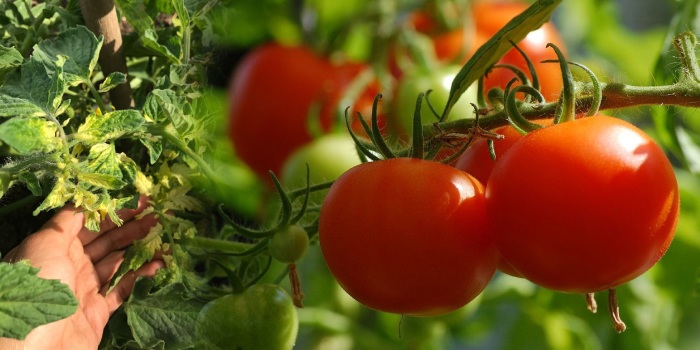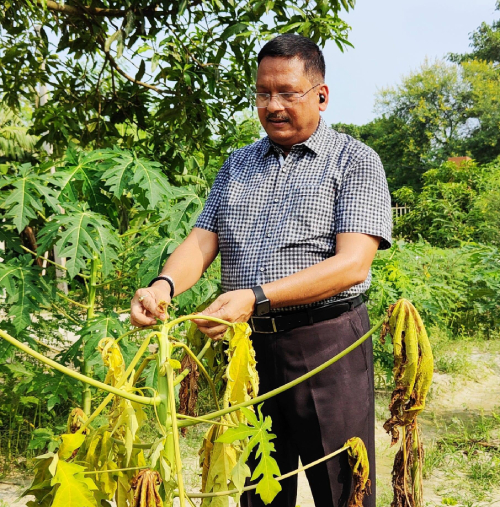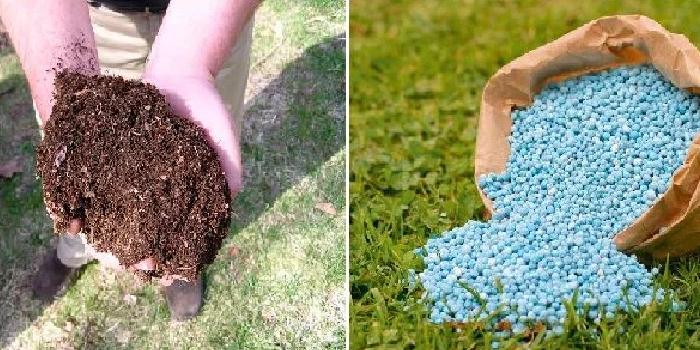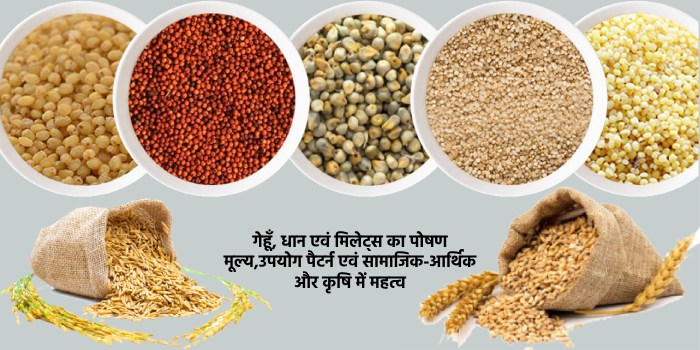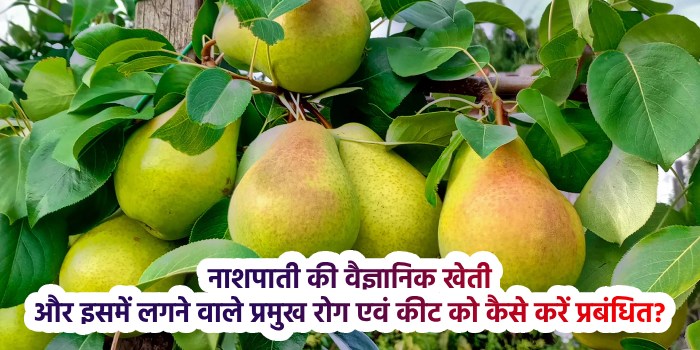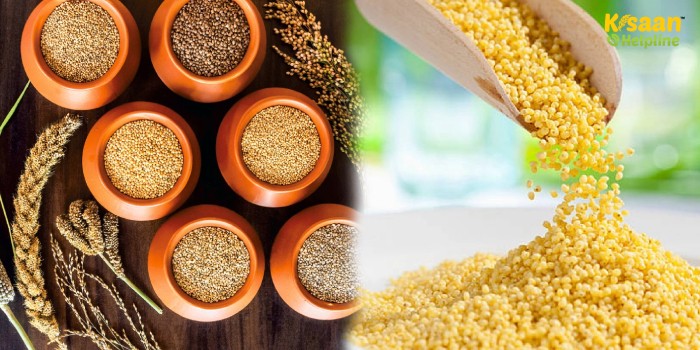
Title- Role of Millets in ensuring Nutritional Security.
By- Raghvendra Kumar Kushwaha
M.Sc. (Agri.) Soil Science
Sam Higginbottom University of Agriculture, Technology and Sciences
Allahabad-211007,U.P.
Introduction- Millets are a sort of small grain and coarse grain crop grown in the Gramineae or Poaceae family; they are often referred to as nutrient cereal or “poor man’s food”. The government of India declared 2018 to be the National Year of Millets Day. The International Year of Millets, which will be held in 2023, was declared in March 2021 by the United Nations General Assembly (UNGA) and the AFO (Food and Agriculture Organization), and the proposal put out by the Government of India to boost millets production has been endorsed by 72 nations.
India alone contributes 41% of the world millets production and the 5 most important states in this area Rajasthan, Maharashtra, Karnataka,Gujarat and Madhya Pradesh and this state represents 1% of exports in millets production. Asian countries account for 80% of global millet production. The Prime Minister also announced ‘Transform India thali into Nutri thali” to support millets in India. Whose purpose was to connect the millet with the plate.
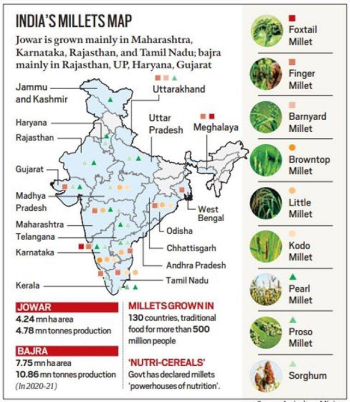
Fig- An explanation of the various types of millets that are grown in India’s various states..
Millets Contribution to Nutritional Security- Millets are a member of the gramineae family of plants and are grown in India for food and fodder. They contain high levels of fiber, protein, antioxidant, calcium, magnesium, iron, zinc and vitamins. Additionally millets contain 9.37 gram of protein, 3.95 gram of fat, 9.3 gram of fiber, 100mg of calcium, 5.25mg iron and 78.29 gram of carbohydrates per 100 gram. Millets are consumed as food to treat diabetes, kidney patients, hypertension patients and heart patients.
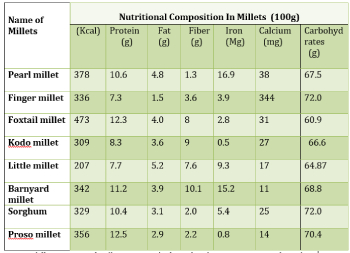
Nine different types of millets are mostly farmed in big quantities in India. Where sorghum,pearl millets and finger millets are primarily grown. Nine millets, split into two categories :-
a) Major Millets
b) Miner Millets
a) Major Millets- Two crops come inside it.
(A) Sorghum (Jowar)
(B) Pearl Millets
(A) Sorghum-: Scientific name- Sorghum bicolor
Main source- Calcium, Magnesium, Zink, Potassium, Selenium, Vitamin B1 & B6.
Use- Lowers cholesterol, Heart patients, To maintain sugar level.
(B) Pearl Millets- Scientific name- Pennisetum glaucm.
Main source- Protein, Dietary fibers, Carbohydrates.
Use- Diabetes patients, Cancer patients, Heart patients.
b) Miner Millets- Seven crops come inside it.
(A) Finger millets
(B) Little millets
(C) Foxtail millets
(D) Barnyard millets
(E) Proso millets
(F) Koda millets
(A) Finger millets- Main source- Protein, Carbohydrates, Vitamin B, Antioxidants.
Use- Makes bone strong, Blood pressure, Liver disorders, Heart patients.
(B) Little millets- Main source- Protein, Fat, Fibers, Carbohydrates, Thiamin.
Use- Diabetes, reduce cholesterol.
(c) Foxtail millets- Main source- Protein, Fibers, Thiamine, Calcium.
Use- Nervous system patients, Diabetes patients.
(D) Barnyard millets- Main source- Fat, Protein, Vitamin.
Use- Heart patients, Diabetes patients, Blood pressure.
(E) Proso millets- Main source- Calcium, Minerals, Phosphorus.
Use- Pellagra patients, Diabetes patients, Cholesterol patients.
(F) Koda millets- Main source- Calcium, Fibers, Niacin.
Use- Diabetes patients.
(G) Brown millets-Main source- Fibers, Fat, Protein, Carbohydrates.
Use- Diabetes patients, Cholesterol patients.
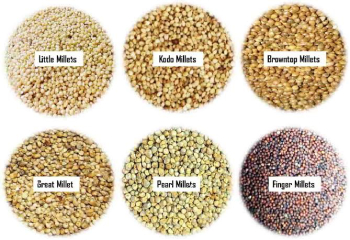
Fig- Different type of Millets.
Reference-
1.The Indian express ( Journalism of courage)
https://indianexpress.com (MAP)



